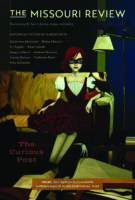Art | November 08, 2019
Dream Logic: The Art of Ten Contemporary Surrealists
Once in a dream I sat reclined in an old-fashioned dentist’s chair at the center of an empty stage illuminated by a single white spotlight. Over my right shoulder, a kangaroo in a surgical mask, its eyes large and brown, with glamorous lashes, held in its five-fingered paw a whirling drill. An audience dressed in fine Victorian evening wear shouted “Bravo” as the kangaroo filled my molar with gold. While many theories have tried to explain the phenomenon of dreams—that they represent a dramatization of personal concerns, a processing of intense emotions, a rehearsal for threatening situations, or, most recently, random neural activity—I woke with a feeling of pure pleasure, delighting in the power of my imagination to stage a comic surrealist tableau. Nietzsche wrote, “The wonderful illusions of the world of dreams, in the creation of which each man behaves as a real artist, are the premise of every kind of visual art.” The absurdist drama staged by my unconscious mind reminds me of the crucial role of dreams in the formation of some the most interesting art of the twentieth and twenty-first centuries.
If you are a student, faculty member, or staff member at an institution whose library subscribes to Project Muse, you can read this piece and the full archives of the Missouri Review for free. Check this list to see if your library is a Project Muse subscriber.
Want to read more?
Subscribe TodaySEE THE ISSUE
SUGGESTED CONTENT

Art
Apr 16 2024
Face Off: Anti-Portraiture in Contemporary Art
Face Off: Anti-Portraiture in Contemporary Art Pablo Picasso’s 1906 Cubist painting Portrait of Gertrude Stein, considered the archetype of anti-portraiture, was created out of frustration and anger. Day after day, in… read more

Art
Jan 08 2024
Robert Henri: Art for Life’s Sake
Robert Henri: Art for Life’s Sake In biographies of American artists of the late nineteenth and early twentieth centuries, Robert Henri’s name appears often. While he was known as cofounder… read more

Art
Dec 18 2023
Edward Hopper and the Art of Voyeurism
Edward Hopper and the Art of Voyeurism Kristine Somerville Edward Hopper didn’t wait for inspiration; he searched for it during his daily walks around New York City. He moved at… read more

